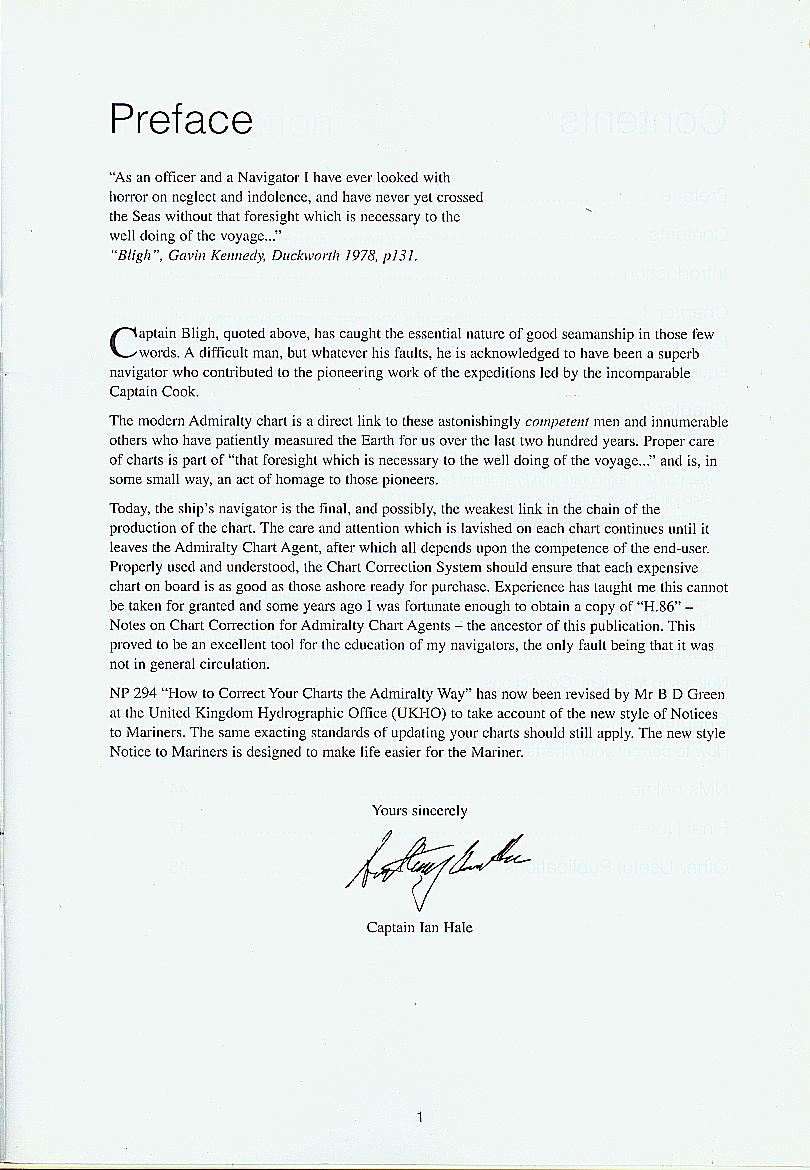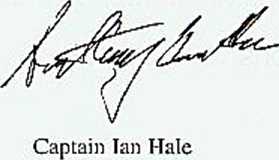01

Preface
“As an officer and a Navigator I have ever lookcd wilh horror on nogi ccc and indolcncc, and have never yel crossed the Seas without that foresight which is neccssary co thc woli doing of thc voyage...”
“Błigh ”, Gcivin Kennedy, Duckworth 1978, pl31.
Caplain Bligh, quoted above, has caught the essential naturo of good seamanship in Lhose few words. A difficult man, but whaccvcr his faulls. he is acknowledged to have been a supcrb navigalor who conlributed to the pioneering work of thc expcdilions led by thc incomparable Captain Cook.
The modern AdmiraUy chart is a direcl link lo these astonishingly competent men and innumcrable others who have patiently measured the Earth for us over thc last iwo hundred years. Proper care of charts is part of “that foresight which is necessary to the well doing of the voyage„ ” and is, in some smali way, an act of homage to those pioneers.
Today, the ship’s navigator is thc finał, and possibly, Che wcakcsl link in the chain of the production of che chart. The care and attention which is lavished on each chart continucs umil it leaves the Admiralty Chart Agent, after which all depends upon the compelence of tlie end-uscr. Piopcrly uscd and understood, the Chart CorrecLion System should ensure that each expensive chart on board is as good as those ashorc ready for purchasc. Expcricncc has Laughl me this cannot be taken for granted and some years ago 1 was fortunate enough to obtain a copy of “H.S6” -Notes on Chart Correction for Admiralty Chart Agents - the ancestor of this publicaLion. This proved to be an excellent lool for thc cducalion of my navigalors, the only fault being that it was not in generał circulation.
NP 294 “How to Correct Your Charts the Admiralty Way” has now been revised by Mr B D Green at tlić United Kingdom Hydrographic Office (UKHO) to take account of the new style of Notices to Marinęrs. The same exacting standards of updating your charts should slill apply. The new style Notice to Marincrs is designed to make life easier for the Mariner.
Yours sinccrcly

1
Wyszukiwarka
Podobne podstrony:
democrats Democrats for csery reocHon, therr n an eąuał and oppoytr gowrnmml program Th* DrmocraU ha
The Office pienie An office pienie can be a delicious opportunity to have fun with your
Morę than 700 Officers and men of Anders army have been aentenced to life or ten to fifteen yeara
00010 o37e5a207821673679142b905c2bbae 9 An Overview and Perspectiye on Control Charting As a backgr
00012 ?3e44d5c893c8e6750f55120a2c44d2 11 An Overview and Perspective on Control Charting empirical
00014 L28ee5aa5f5654405d1c5056d87a4de 13 An Overview and Perspective on Control Charting enough to
00016 ?eb564a5f5b77c28047d13120a3d2db 15 An Overview and Perspective on Control Charting Types of C
00018 ?126d8fbff6a07076d7ce28f47995e8 17 An Overview and Perspective on Control Charting Box, G. E.
00020 ?68046030720deca2e354bf62003115 19 An Overview and Perspective on Control Charting Padgett, C
00232 ?9b1ac6d3646bcdf4e254edd2dae625 234 Baxley Choosing menu option #5 results in an individual a
00469 ?5193b0eebc921358b059bb4bde7465 475 An Algorithm and a Graphical Approach for Short Run Proce
00471 $17d33eb6862cf36c8a862921ea9ad8 477 An Algorithm and a Graphical Approach for Short Run Proce
00475 >f2c01f7e13779b48d08895e2b7b747 481 An Algorithm and a Graphical Approach for Short Run Proce
00477 ?d879c3fb6e9f78fbb855dd7194d159 An Algorithm and a Graphical Approach for Short Run Processes
smpb 23 The souł is withered and ucbased in an unhealthy and cold body the molicuic of a drug—even w
więcej podobnych podstron